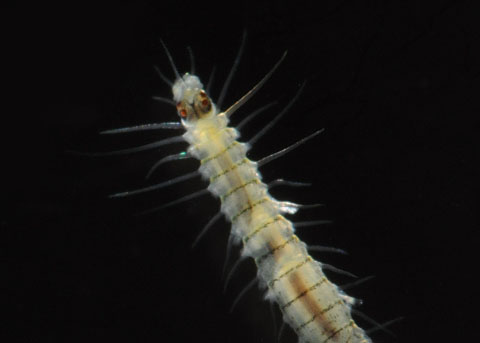Facts
· Legend has it that Christopher Columbus and his crew witnessed the bioluminescent display of a similar species just before making landfall on the Americas.
· The closest relatives to the
annelida phylum are the
mollusks.

· Odontosyllis phosphorea disappear in the winter and it is unknown where they go (Pickett, 2012).
· Parapodia allow for a wide variety of movement (Hesselberg and Vincent, 2006).
· Odontosyllis phosphorea are known as fire worms for their bioluminescent capabilities.
Figure 1. Photo of Odontosyllis phosphorea taken by Peter J. Bryant
· Odontosyllis phosphorea find protection from predators within silky cocoons (Jones and Wood, 2006).
· Odontosyllis phosphorea have immune systems just like humans (Dhainaut and Scaps, 2001)!
· Twilight is the optimal time for reproduction because it is a transition time when day time predators are sleeping and night time predators are just waking up.
· Odontosyllis phosphorea often swallow their prey whole.
· Odontosyllis phosphorea is well adapted to its habitat.
Next Page: References